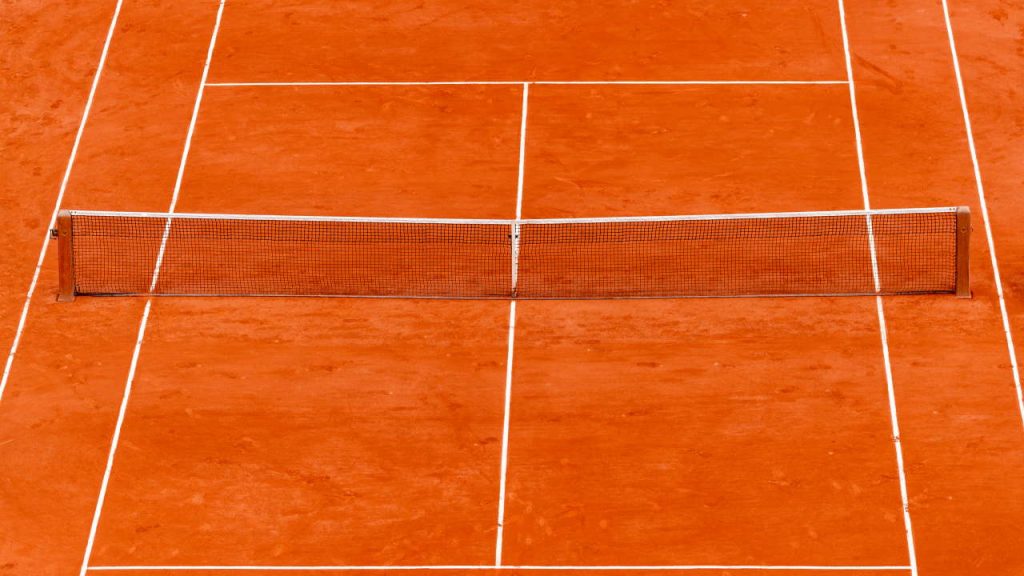Tennis is a sport that people of all age groups can play. Tennis players who constantly go back and forth, right and left on the court, will see their shoes wear out in a short time. You can play tennis up to a point with standard sneakers. To avoid injury and succeed, you must buy tennis shoes. In this article, we will try to give information about what to look for in tennis shoes.
How Do You Pick Tennis Shoes?
Tennis shoes are a product that tennis players need the most, and that helps them increase their performance during the game. Sometimes we play volley service, sometimes we play defense, and our footwear must support our game type. Let’s examine this article together if you want to know what to look for in tennis shoes.

Foot Type
The way you hit the ground in tennis also plays an important role. When choosing footwear, you must consider your foot type and how you step on the ground. The wet foot test lets you learn your foot type in seconds. After wetting your feet enough, step on a completely flat surface. The resulting trace will tell you about your foot type. Now that you know your foot type let’s see how the footwear selection should be.
Normal Base
If your foot has left a wide line on the floor between the heel and toe, your foot type is normal sole. For example, tennis players with normal soles may prefer classic tennis shoes.
Flatfoot
You might think that having flat feet is a bad thing. However, being flat feet does not prevent you from playing tennis. There are tennis shoes specially produced to avoid injury to flat feet. With this footwear, you can eliminate the risk of injury.
Pit Bottom
A tennis player with a hollow sole often fails because they cannot get enough support from the floor. If you have a hollow sole, you should look at the models with special pillows and supportive features.

Shoe Cushion
Tennis shoes and standard sneakers are different from each other. The cushion part of tennis footwear is made of PU and EVA materials. PU is found in footwear with solid and strong pressure, while EVA is in footwear that offers freedom of movement. If you like to stay defensive, you should choose PU; if you are going to volley and serve, you should choose the EVA mattress.
Game Style
When tennis players buy footwear, they look for models suitable for their playing styles. For example, are you a server, volley player, or line player within the playing field? Each type of play has different footwear selections. For example, the server must run to the line immediately after serving. On the back line, you must constantly move left and right. Some footwear requires reinforced edges, while some players want to wear shoes with a thin sole design.
Ground Type
When buying tennis shoes, you should also look at the floor on which you play. Since tennis is played on three different types of floors, footwear must be produced specifically for the floors. Wearing shoes unsuitable for the ground may cause discomfort and injury to the tennis player. How to choose footwear according to floor types;
Clay Court

Tennis players playing on clay courts spend more effort than those playing on other courts. For this reason, looking at footwear that supports the feet more for clay courts is necessary. At the same time, clay tennis court footwear, which allows a little gliding on the dirt floor, adds speed to the speed of tennis players.
Hard Court
If the place where you will go to a tennis match is on hard ground, the footwear you will buy should be reinforced footwear with herringbone patterns. Since the ground will be hard, the footwear must be durable. If you go on hard ground with the footwear you wear on other courts; you are likely to fail.
Grass Court
A grass court is a ground where tennis players are injured more. Players, who will play on the grass court, prefer footwear with rubber soles, teeth, or protrusions so that their feet will not slip. On grass courts, which do not require constant action like a clay court, footwear is durable and usable for a long time. Even if you’re going to a carpeted grass court, wearing flat-soled tennis shoes will do the trick.
What Makes a Tennis Shoe a Tennis Shoe?
Before buying your footwear, it may be essential to know the features that make other sports and tennis shoes different. For example, sudden stops and sprints typical of tennis are the main inspiration for tennis shoe design.

Tennis shoes are typically more lateral and have an underscored pattern suitable for the type of court they belong to. On the other hand, they are more robust and more structured. Other sneakers have a thicker, softer heel structure with reduced impact.
Are Running Shoes Ok for Tennis?
The first question mark that appears in the minds of everyone who hears that they need a new tennis shoe is “What to look for in tennis shoes?” will be a question. Knowing the answer to this question is essential to understanding why an ordinary sneaker would not be suitable for playing tennis.
The key difference between tennis shoes and sneakers is that tennis shoes are designed to prevent your feet from moving from side to side. A good pair of tennis footwear has good ankle support and materials such as air bubbles or gel for the top and back of your foot.
We should approach our footwear with the same devotion as we approach the racquet with great interest before we start. Otherwise, by choosing footwear that is not suitable, we may cause ankle and knee injuries, and we may be left alone with complaints of severe low back pain.
What Are the Different Types of Tennis Shoes?
Tennis played on grass, dirt, or hard courts is a very different sport. In this sport, which is different from all sports branches, footwear is the essential equipment after the racket.
On a grass court, the ball stays low and fast. However, the game is a bit slower on clay courts, and the ball may bounce higher uncontrollably.

Your style of play needs to adapt to the court’s surface, and your footwear is the first thing to consider. After all, your feet are always in contact with the ground.
Grass Court
Service and volley players have always been successful on grass courts thanks to the speed of the ball from the ground. Grass Court is the favorite court surface of those with a strong serve and those who come to the net quickly.
Properties:
- It should hold the ground well because grass courts can be slippery due to moisture or wear over time.
- It has a flatter outsole to avoid damaging the turf. Players on certain tournament turf should wear fully flat tennis shoes.
- There should be a flexible upper part to prevent your feet from slipping when you run toward the ball.
Grass pitches require a less durable outsole as the ground is softer and doesn’t damage your footwear like hard courts.

Ground Court
Because clay courts are a bit slower, players with much power can stand back and hit powerfully. Therefore, balance and lateral support are needed. Before adjusting your feet for the kick, you must move from side to side.
You will also need:
- As dusty clay courts do not give you much grip, you will have maximal ground grip,
- A well-designed whole herringbone outsole removes clay from its grooves and leaves no marks on the pitch.
- Thanks to the durable sides, your footwear is not damaged while sliding for the ball,
- Lateral support pads while moving side to side along the baseline,
- A tight upper keeps your foot stable as you move around the field.
Hard Court

Hard courts are sometimes considered hard floors. It is a type of court between clay and grass courts regarding ball bounce and speed. It suits many different play styles, where both fast and strong players are equally matched. Hard courts always demand a lot from your footwear.
Then you will need features:
- A solid outsole that can meet the demands of a hard court surface.
- Due to the nature of the hard court, a good cushioning and fast return will be exerted on the joints of your feet and legs.
- Sturdy upper that provides support as you move around the field.



